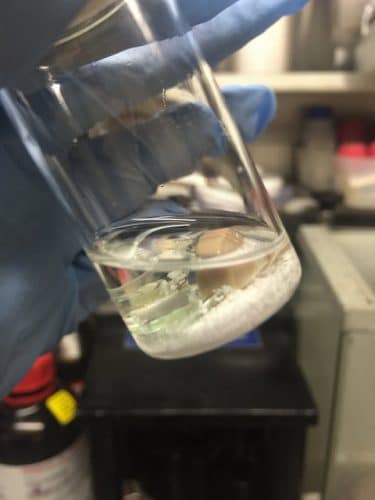The scientists used cognitive tools in the field of computational chemistry to discover a catalyst for the production of biodegradable plastic from plants

Despite the availability of biodegradable disposable cutlery on store shelves, consumers often choose the cheaper option of disposable utensils made of ordinary, petroleum-based plastic - which pollutes the environment. New research by IBM has identified a chemical catalyst that makes it possible to produce cheap biodegradable plastic from plants such as palm trees and beets. Such cheap plastic can be used to manufacture a wide variety of products, from dinnerware to medical devices.
The Department of Computational Chemistry at IBM's Almaden Laboratory, in California, was looking for an efficient and cheaper way to produce biodegradable plastics. The current method of converting plants into biodegradable plastic is helped by the incorporation of heavy metals in the process, which are difficult to get rid of later. The new catalyst is essentially an organic material, which significantly reduces the energy needed for the process, and lowers the final product. The catalyst does not contain any heavy metals - and therefore it is biodegradable in the environment, just like the plastic produced with it.
The research made use of computer models of chemical processes, along with laboratory work. The computer models made it possible to examine a series of chemical structures of possible catalysts, in order to locate and define the most efficient and cheapest catalyst.
The current research demonstrates well the possible uses of cognitive computing systems, especially in the world of materials research. The scale, the rate of development and the growing complexity of materials science pose complex challenges to scientists working on the discovery of new materials. IBM's research laboratories combine expertise in the fields of informatics of polymers and other materials, in order to build prototype systems that enable data retrieval, organization, analysis, and prediction of the behavior of new materials. By leveraging the existing knowledge in the world's scientific databases and speeding up the calculations used in these types of experiments, these cognitive tools may help identify structural patterns and methods of formation of materials, and enable the rapid realization of new discoveries in the field.
IBM's new research paper was published this month in the scientific journal Nature Chemistry, as part of a long-standing collaboration that IBM maintains with the Department of Chemistry at Stanford University. IBM's research laboratory in Elmden is celebrating, these days, thirty years of innovation, including: the development of the hard disk, the invention of the tabular database and the development of the first neuromorphic chip.

One response
Great, hope it will be used soon.